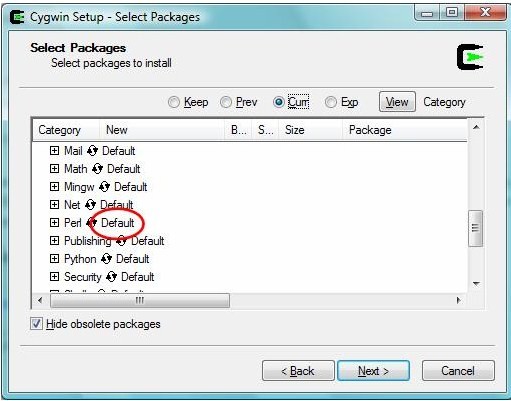Install Cygwin On Windows Xp

Cygwin features include, Remote Login, Terminals, Text Processing, Text Utilities, Shells, Development Tools, Servers etc. Download setup.exe for Windows. How to Install Cygwin on Windows 10 Cygwin is an open source project which provides the functionality of Linux distribution on the Windows platform. This tutorial will teach you how you can install Cygwin on Windows 10.
Installing Cygwin Notes for installing and using Cygwin. I use Cygwin for a lot of my work because my laptop is more versatile running Windows XP as its main operating system but I would still like to use Unix programs like X11, Emacs, LaTeX and gcc. The Cygwin X11 server also runs much faster than running X11 on VMware even though they are built from very similar X11 (XFree86 or X.org) sources. Also, SSH in the Cygwin environment is nearly identical to the way it is used on Unix, allowing me to use xterm and ssh instead of PuTTY, a fine SSH/terminal standalone application. Updated: March 13, 2005 • • • • • • • • • • • • • • • • • • • • • • • • • • • • • • • • • • • • Installing on Windows 2000/XP Quick Start Basically here are the steps I used to get started: • Prerequisite: Windows XP or Windows 2000 • Use the from the Cygwin web site or use my instructions here.
These are also useful.  • Create a directory where you want the entire installation.
• Create a directory where you want the entire installation.
I chose to use C: cygwin, a folder on the Windows boot disk. I will call this the Cygwin directory from now on. This will also contain the user home directories within it.
You should be able to use either an NTFS disk or FAT32 disk. • Download the setup.exe program from and place it in your Cygwin directory. This program is a simple installer and does not use the Windows XP 'Add/Remove Programs' feature.
So just put setup.exe in C: cygwin and use it from there. • Choose the Install from Internet option.
This will download the pre-built Cygwin binary packages and cache them in a local directory on your hard disk. If you prefer, you can first download the binary packages and then install them later. In some cases • Use C: cygwin as your root (Cygwin) directory, install for All Users, and use Default Text File Type of Unix (which is the 0x0A line termination character instead of the Windows convention of using two characters, 0x0D 0x0A). • Use C: cygwin Latest for the local package directory. This is a cache directory of binaries. You can always clean it out once you've installed a package. • Use Direct Connection for the internet connection, unless you are required to use a proxy.
• Choose a Download Site. This is a sticky setting which you will see again if you run the program again. I initially selected the for no particularly strong reason. It has been reliable over the last couple years, so I'm continuing to use that.
RCN is an large ISP/connectivity provider in the U.S. So they should be well-connected. • Next, Select packages. The user interface is terse, but usually you use the Curr view which shows you the current packages that you have installed or elected to install.
The next time you use the installer, like I do about once a month, you can upgrade the packages, in place, without disturbing your existing installation. The View button shows you alternative views. Click Partial to see what will be updated or installed. You can just click Next for the default set to get you up and running.
This will not install commonly desired packages, such as the X11 server or Emacs. • First, the binary packages will be downloaded from the internet.
Next, each pre-built binary package will be installed into the Cygwin directory root ( C: cygwin). You can elect to Create Icons, but I usually get rid of it. The only front-end that I use is are C: cygwin cygwin.bat and C: cygwin usr X11R6 bin startxwin.bat. I created a shortcut to those scripts in my Windows XP Quick Launch bar. • After the installation process completes (all packges are downloaded), start up using the Cygwin icon or cygwin.bat and you will see a Bash shell. The program will not appear in any of the Start menus listing programs, so put a shortcut there if you like.